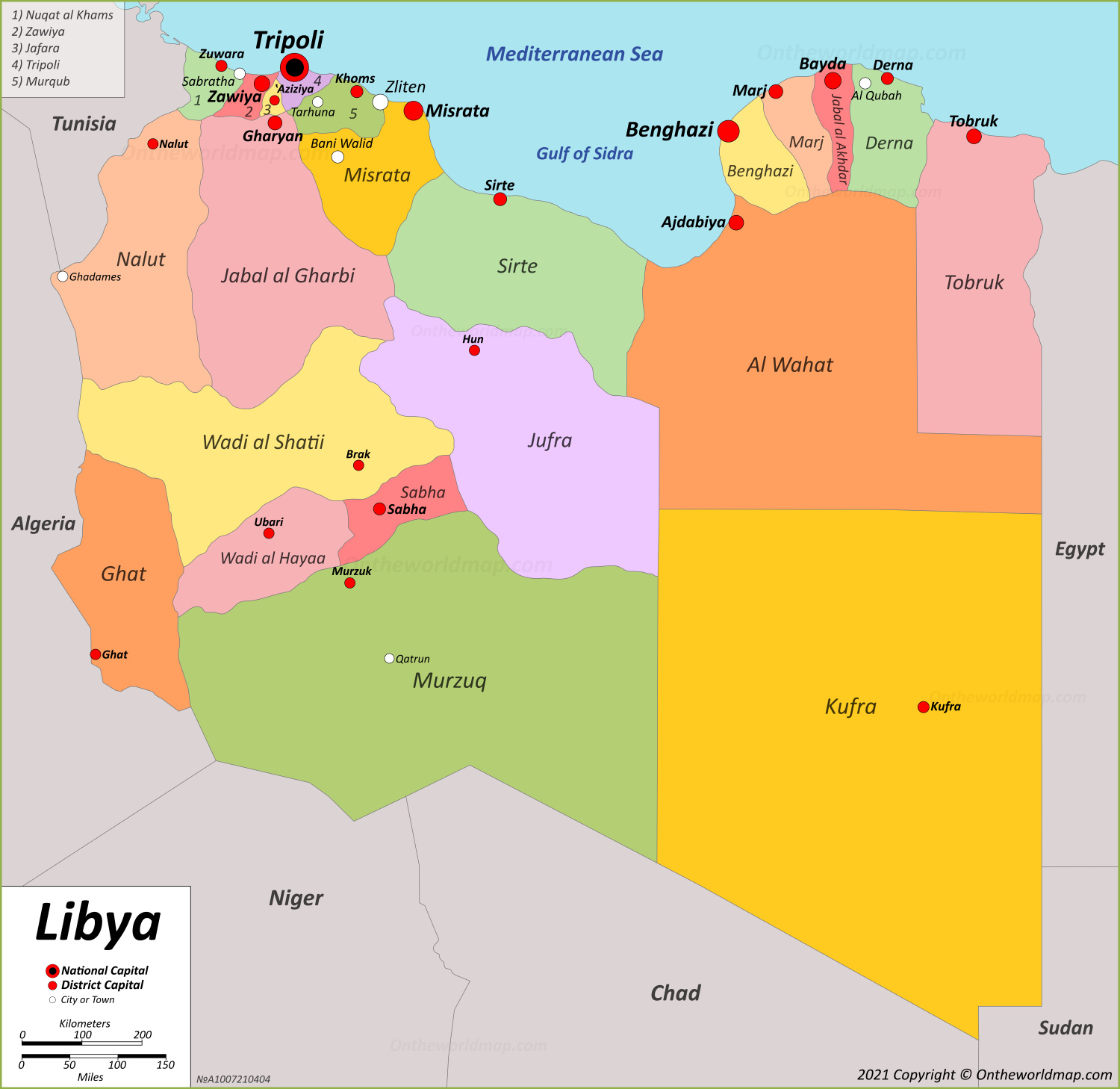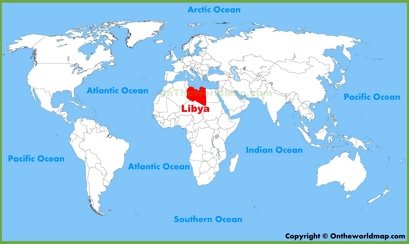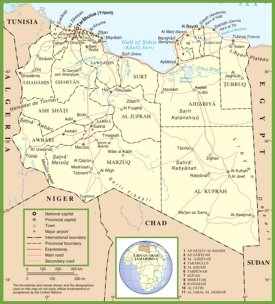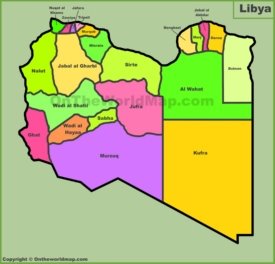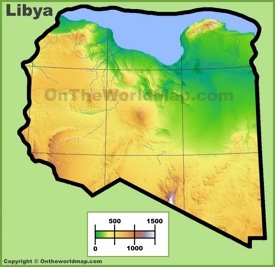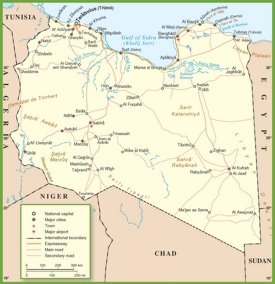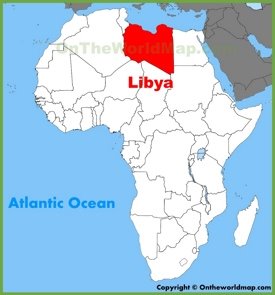Libya Map
Description:
This map shows governmental boundaries of countries; districts, district capital cities, and major cities and towns in Libya.
Size: 1500x1458px / 396 Kb
Author: Ontheworldmap.com
You may download, print or use the above map for educational, personal and non-commercial purposes. Attribution is required. For any website, blog, scientific research or e-book, you must place a hyperlink (to this page) with an attribution next to the image used.
Online Map of Libya
Detailed Maps of Libya
About Libya
Libya, located in North Africa, is bordered by Egypt to the east, Sudan to the southeast, Chad and Niger to the south, Algeria and Tunisia to the west, and the Mediterranean Sea to the north.
Tripoli, the capital and largest city, serves as the main political, economic, and cultural center. Tripoli's strategic coastal location enhances its role in trade and commerce.
Other significant cities include Benghazi, the country's second largest city, known for its economic and industrial activities, and Misrata, which functions as a key commercial center.
Libya's economy is heavily dependent on its vast oil reserves, which form the backbone of its economic structure. The oil sector accounts for a significant portion of the country's GDP and export earnings. However, political instability and conflicts have periodically disrupted oil production and exports, affecting economic performance.
In addition to oil, Libya has natural gas reserves and has the potential to develop renewable energy, particularly solar energy, given its vast desert areas. The country's economy also includes agriculture, although arable land remains limited and focused on crops such as wheat, barley and olives.
Libya's political landscape has undergone significant upheaval since the 2011 uprising, leading to ongoing challenges to governance and national unity. Efforts to stabilize the political environment are ongoing, with international engagement and local initiatives aimed at building sustainable governance. Despite these challenges, Libya's strategic location and natural resources offer opportunities for future economic development and regional influence.
The Facts:
Capital: Tripoli.
Area: 679,363 sq mi (1,759,541 sq km).
Population: ~ 7,500,000.
Largest Cities: Tripoli, Benghazi, Misrata, Zliten, Zawiya, Bayda, Tobruk, Ajdabiya, Gharyan, Marj, Derna, Sirte, Sabha, Bani Walid, Khoms, Sabratha, Zuwara, Al Qubah, Kufra, Tajura, Tarhuna, Msallata, Jumayl, Sorman.
Official language: Arabic.
Currency: Libyan dinar (LYD).
Districts of Libya: Nuqat al Khams, Zawiya, Jafara, Tripoli, Murqub, Misrata, Sirte, Benghazi, Marj, Jabal al Akhdar, Derna, Tobruk, Nalut, Jabal al Gharbi, Wadi al Shatii, Jufra, Al Wahat, Ghat, Wadi al Hayaa, Sabha, Murzuq, Kufra.
Geography of Libya
Libya's geography is characterized by a predominantly arid landscape, with the Sahara Desert occupying about 90% of its territory. The country is divided into three main regions: Tripolitania in the northwest, Cyrenaica in the east, and Fezzan in the southwest. Each region differs in topography and climate.
Libya's narrow northern coastline is dominated by a Mediterranean climate characterized by mild, wet winters and hot, dry summers. Inland, the climate changes to an arid desert climate, with sharp temperature swings between day and night. The Sahara receives minimal rainfall, often less than 50 millimeters per year, resulting in sparse vegetation.
Despite the harsh conditions, Libya has a few oases that support limited agriculture and settlement. The Great Man-Made River, an ambitious water project, is designed to provide fresh water from underground aquifers to coastal cities and agricultural areas.
Brief History of Libya
Libya's history includes a number of foreign possessions and significant transformations. Phoenicians, Greeks and Romans established the first settlements, with the latter incorporating Libya into their empire. In the 7th century, Arab armies brought Islam, which had a profound impact on the culture and society of the region.
The Ottoman Empire controlled Libya from the 16th century until colonization by Italy in 1911. Libya gained independence in 1951, establishing a monarchy headed by King Idris. A military coup led by Muammar Gaddafi in 1969 replaced the monarchy with a republic, beginning decades of authoritarian rule.
In 2011, a popular uprising that became part of the Arab Spring led to Gaddafi's overthrow and subsequent death. Since then, Libya has faced political instability and conflict, as well as ongoing efforts to establish a unified government and sustainable governance.

